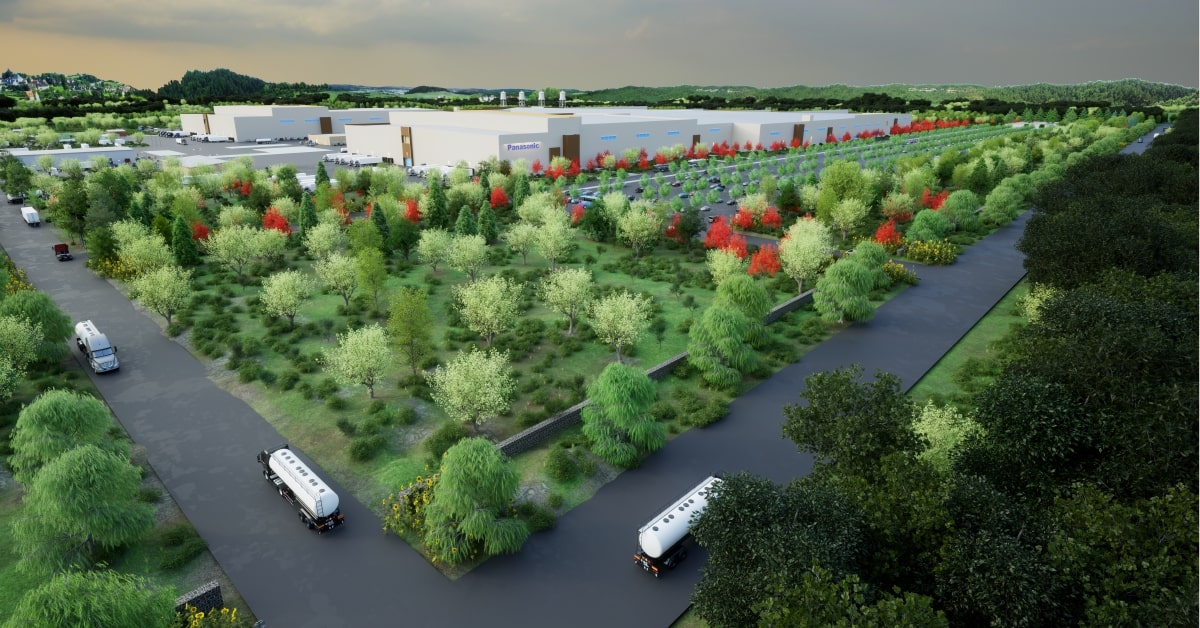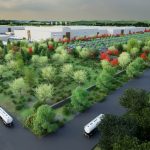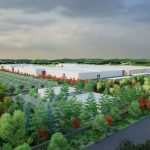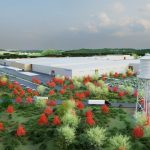Tesla battery cell supplier Panasonic broke ground on a new lithium-ion battery manufacturing facility in De Soto, Kansas, contributing approximately 30 GWh of annual capacity in North America.
The facility is set to focus on rapidly ramping up the manufacture of 2170 cylindrical cells to match surging domestic demand within the United States. Panasonic is planning to mass produce the battery cells by March 2025, and upon completion of the facility, it will add 30 GWh of capacity of battery supply to EV companies in the United States.
- Credit: Panasonic
- Credit: Panasonic
- Credit: Panasonic
Kazuo Tadanobu, President and CEO of Panasonic Energy Co., Ltd., commented on the announcement:
“This groundbreaking in Kansas is an important step towards expanding our production capacity in North America to meet the rapidly growing demand for lithium-ion batteries. With our leading technology, proven expertise, and the state of Kansas as a critical partner, we will continue driving the industry forward while pursuing a more prosperous and sustainable future for our society.”
The construction of an additional battery production plant in Kansas incites Panasonic’s intention to dominate as an EV battery supplier for the numerous automotive companies in the United States. While the company already supplies batteries for Tesla through Gigafactory Nevada, the Kansas production facility is expected to funnel cells to Gigafactory Texas, where Tesla is currently utilizing 2170 and 4680 cells for the most recent builds of the Model Y.
Panasonic landed on Kansas as the location for the plant back in July but had potentially slotted out land plots in nearby Oklahoma. Kansas offered more advantages, including a hefty and diverse talent pool that is expected to fulfill 4,000 jobs at the factory. Panasonic is investing $4 billion into the plant, and Tadanobu said the facility will help strengthen production capacity in an increasing demand market.
“As the global shift to EVs accelerates, we are looking into ways to strengthen our battery production capacity in North America and meet the growing demand from our automotive partners,” Tadanobu said last month.
While Panasonic only explicitly mentioned the 2170 cells in its announcement, it is expected that the company will eventually transition to produce 4680 cells at the plant. Tesla and Panasonic have been working together to develop the 4680 cell, which Tesla unveiled at its Battery Day event in late 2020.
Panasonic reportedly sent 4680 samples to Tesla in June. Large-scale prototype production of the 4680 cells is expected to launch in Japan in May 2023, Tadanobu said.
I’d love to hear from you! If you have any comments, concerns, or questions, please email me at joey@teslarati.com. You can also reach me on Twitter @KlenderJoey, or if you have news tips, you can email us at tips@teslarati.com.

News
Tesla launches its coolest gift idea ever just a few weeks after it was announced
“Gift one month of Full Self-Driving (Supervised), which allows the vehicle to drive itself almost anywhere with minimal intervention.”

Tesla has launched its coolest gift idea ever, just a few weeks after it was announced.
Tesla is now giving owners the opportunity to gift Full Self-Driving for one month to friends or family through a new gifting program that was suggested to the company last month.
The program will enable people to send a fellow Tesla owner one month of the company’s semi-autonomous driving software, helping them to experience the Full Self-Driving suite and potentially help Tesla gain them as a subscriber of the program, or even an outright purchase.
Tesla is going to allow owners to purchase an FSD Subscription for another owner for different month options
You’ll be able to gift FSD to someone! https://t.co/V29dhf5URj
— TESLARATI (@Teslarati) November 3, 2025
Tesla has officially launched the program on its Shop. Sending one month of Full Self-Driving costs $112:
“Gift one month of Full Self-Driving (Supervised), which allows the vehicle to drive itself almost anywhere with minimal intervention. All sales are final. Can only be purchased and redeemed in the U.S. This gift card is valued at $112.00 and is intended to cover the price of one month of FSD (Supervised), including up to 13% sales tax. It is not guaranteed to cover the full monthly price if pricing or tax rates change. This gift card can be stored in Tesla Wallet and redeemed toward FSD (Supervised) or any other Tesla product or service that accepts gift card payments.”
Tesla has done a great job of expanding Full Self-Driving access over the past few years, especially by offering things like the Subscription program, free trials through referrals, and now this gift card program.
Gifting Full Self-Driving is another iteration of Tesla’s “butts in seats” strategy, which is its belief that it can flip consumers to its vehicles and products by simply letting people experience them.
There is also a reason behind pushing Full Self-Driving so hard, and it has to do with CEO Elon Musk’s compensation package. One tranche requires Musk to achieve a certain number of active paid Full Self-Driving subscriptions.
More people who try the suite are likely to pay for it over the long term.
News
Tesla expands Robotaxi app access once again, this time on a global scale
Tesla said recently it plans to launch Robotaxi in Miami, Houston, Las Vegas, Phoenix, and Dallas.
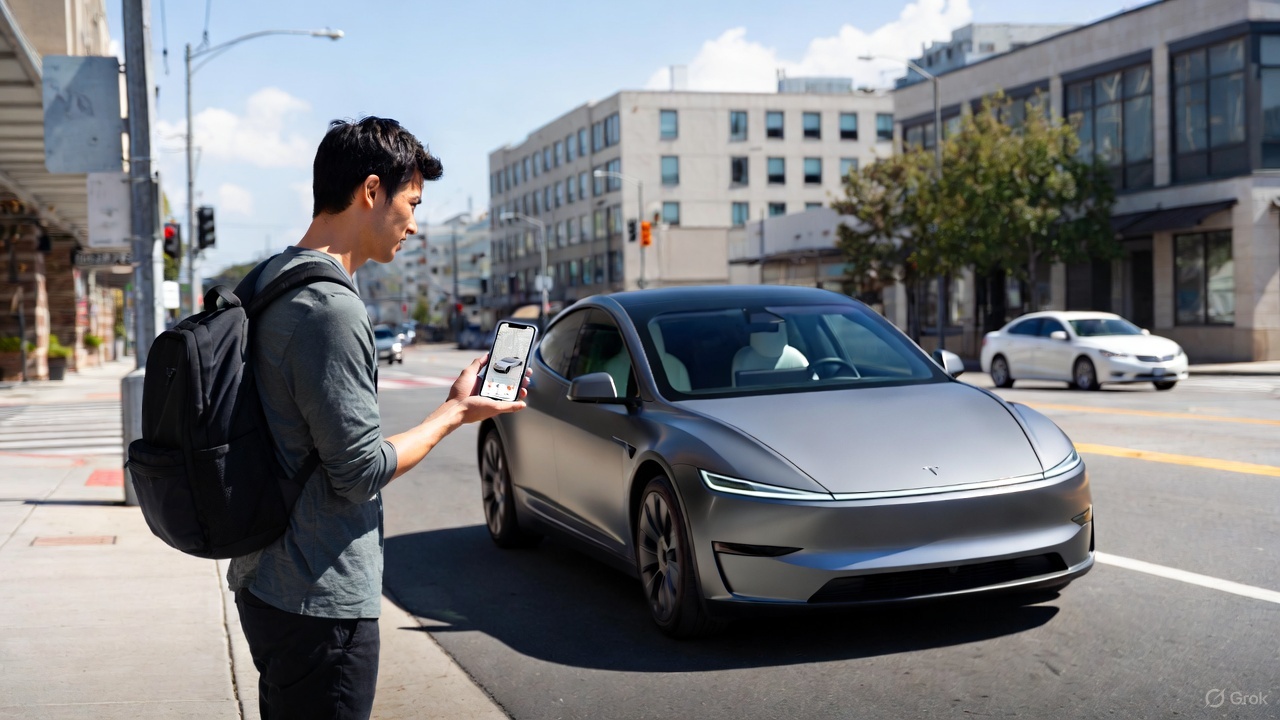
Tesla has expanded Robotaxi app access once again, but this time, it’s on a much broader scale as the company is offering the opportunity for those outside of North America to download the app.
Tesla Robotaxi is the company’s early-stage ride-hailing platform that is active in Texas, California, and Arizona, with more expansion within the United States planned for the near future.
Tesla said recently it plans to launch Robotaxi in Miami, Houston, Las Vegas, Phoenix, and Dallas.
The platform has massive potential, and Tesla is leaning on it to be a major contributor to even more disruption in the passenger transportation industry. So far, it has driven over 550,000 miles in total, with the vast majority of this coming from the Bay Area and Austin.
First Look at Tesla’s Robotaxi App: features, design, and more
However, Tesla is focusing primarily on rapid expansion, but most of this is reliant on the company’s ability to gain regulatory permission to operate the platform in various regions. The expansion plans go well outside of the U.S., as the company expanded the ability to download the app to more regions this past weekend.
So far, these are the areas it is available to download in:
- Japan
- Thailand
- Hong Kong
- South Korea
- Australia
- Taiwan
- Macau
- New Zealand
- Mexico
- U.S.
- Canada
Right now, while Tesla is focusing primarily on expansion, it is also working on other goals that have to do with making it more widely available to customers who want to grab a ride from a driverless vehicle.
One of the biggest goals it has is to eliminate safety monitors from its vehicles, which it currently utilizes in Austin in the passenger’s seat and in the driver’s seat in the Bay Area.
A few weeks ago, Tesla started implementing a new in-cabin data-sharing system, which will help support teams assist riders without anyone in the front of the car.
Tesla takes a step towards removal of Robotaxi service’s safety drivers
As Robotaxi expands into more regions, Tesla stands to gain tremendously through the deployment of the Full Self-Driving suite for personal cars, as well as driverless Robotaxis for those who are just hailing rides.
Things have gone well for Tesla in the early stages of the Robotaxi program, but expansion will truly be the test of how things operate going forward. Navigating local traffic laws and gaining approval from a regulatory standpoint will be the biggest hurdle to jump.
Investor's Corner
Tesla gets price target boost, but it’s not all sunshine and rainbows
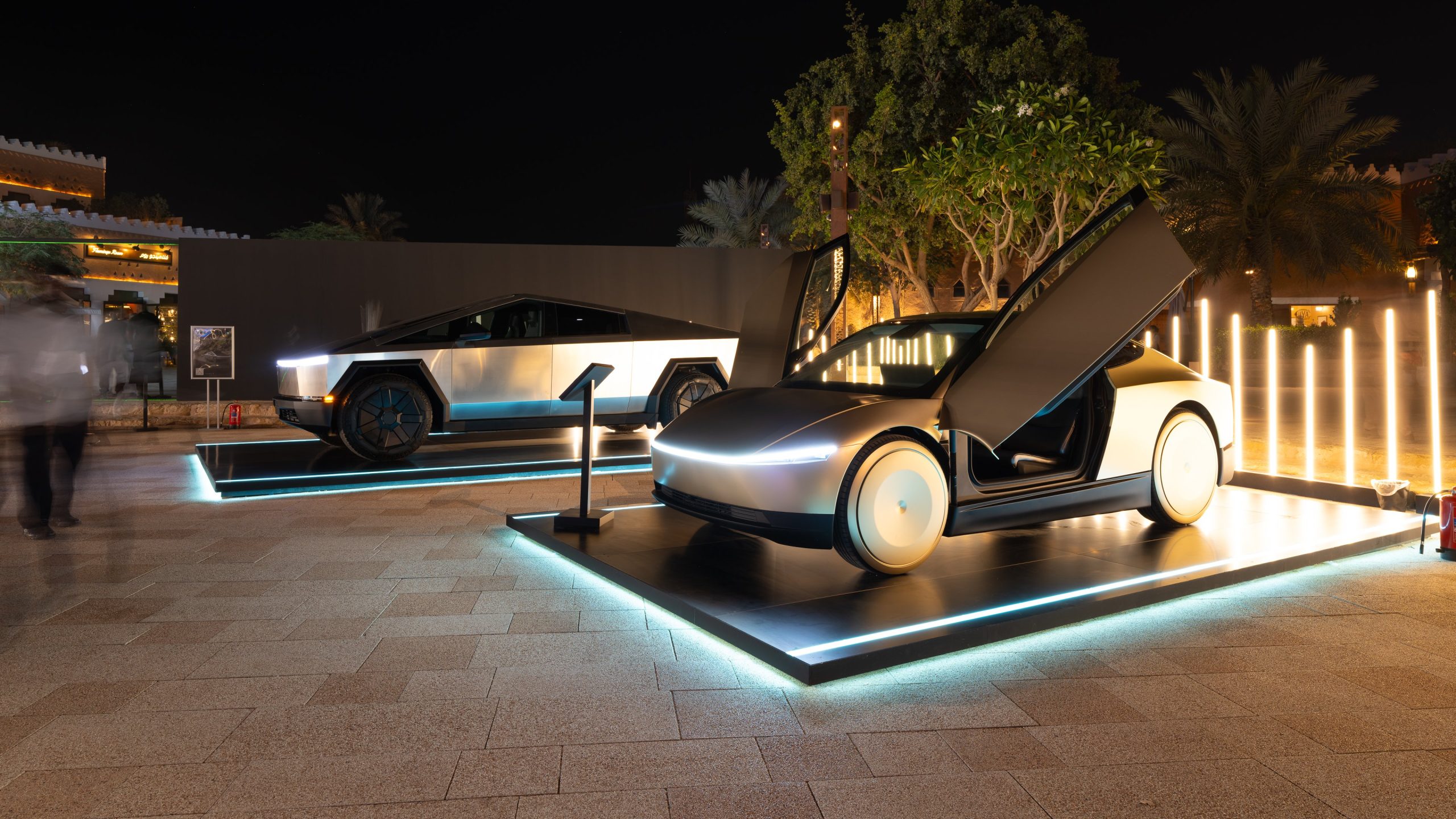
Tesla received a price target boost from Morgan Stanley, according to a new note on Monday morning, but there is some considerable caution also being communicated over the next year or so.
Morgan Stanley analyst Andrew Percoco took over Tesla coverage for the firm from longtime bull Adam Jonas, who appears to be focusing on embodied AI stocks and no longer automotive.
Percoco took over and immediately adjusted the price target for Tesla from $410 to $425, and changed its rating on shares from ‘Overweight’ to ‘Equal Weight.’
Percoco said he believes Tesla is the leading company in terms of electric vehicles, manufacturing, renewable energy, and real-world AI, so it deserves a premium valuation. However, he admits the high expectations for the company could provide for a “choppy trading environment” for the next year.
He wrote:
“However, high expectations on the latter have brought the stock closer to fair valuation. While it is well understood that Tesla is more than an auto manufacturer, we expect a choppy trading environment for the TSLA shares over the next 12 months, as we see downside to estimates, while the catalysts for its non-auto businesses appear priced at current levels.”
Percoco also added that if market cap hurdles are achieved, Morgan Stanley would reduce its price target by 7 percent.
Perhaps the biggest change with Percoco taking over the analysis for Jonas is how he will determine the value of each individual project. For example, he believes Optimus is worth about $60 per share of equity value.
He went on to describe the potential value of Full Self-Driving, highlighting its importance to the Tesla valuation:
“Full Self Driving (FSD) is the crown jewel of Tesla’s auto business; we believe that its leading-edge personal autonomous driving offering is a real game changer, and will remain a significant competitive advantage over its EV and non-EV peers. As Tesla continues to improve its platform with increased levels of autonomy (i.e., hands-off, eyes-off), it will revolutionize the personal driving experience. It remains to be seen if others will be able to keep pace.”
Additionally, Percoco outlined both bear and bull cases for the stock. He believes $860 per share, “which could be in play in the next 12 months if Tesla manages through the EV-downturn,” while also scaling Robotaxi, executing on unsupervised FSD, and scaling Optimus, is in play for the bull case.
Will Tesla thrive without the EV tax credit? Five reasons why they might
Meanwhile, the bear case is placed at $145 per share, and “assumes greater competition and margin pressure across all business lines, embedding zero value for humanoids, slowing the growth curve for Tesla’s robotaxi fleet to reflect regulatory challenges in scaling a vision-only perception stack, and lowering market share and margin profile for the autos and energy businesses.”
Currently, Tesla shares are trading at around $441.
